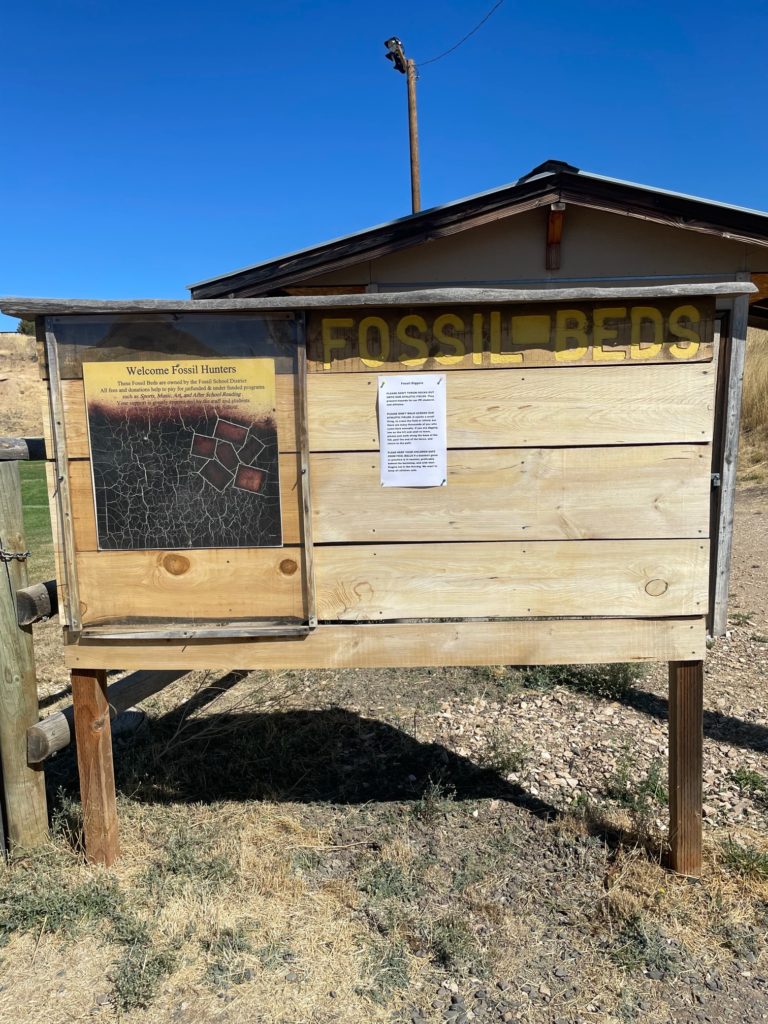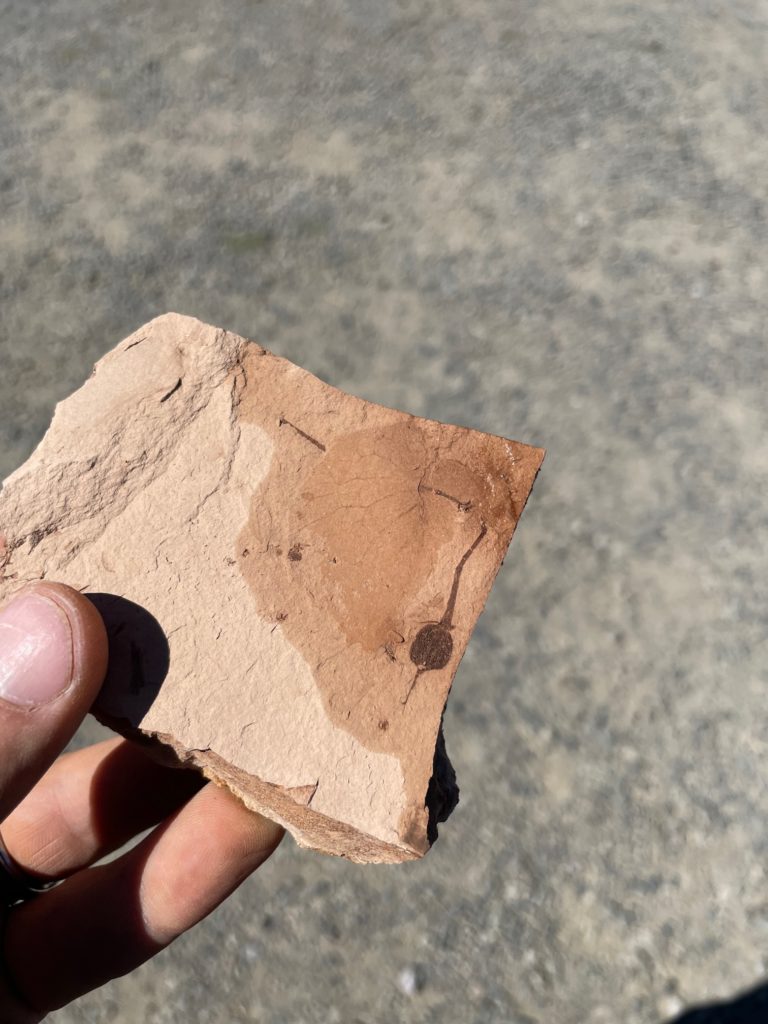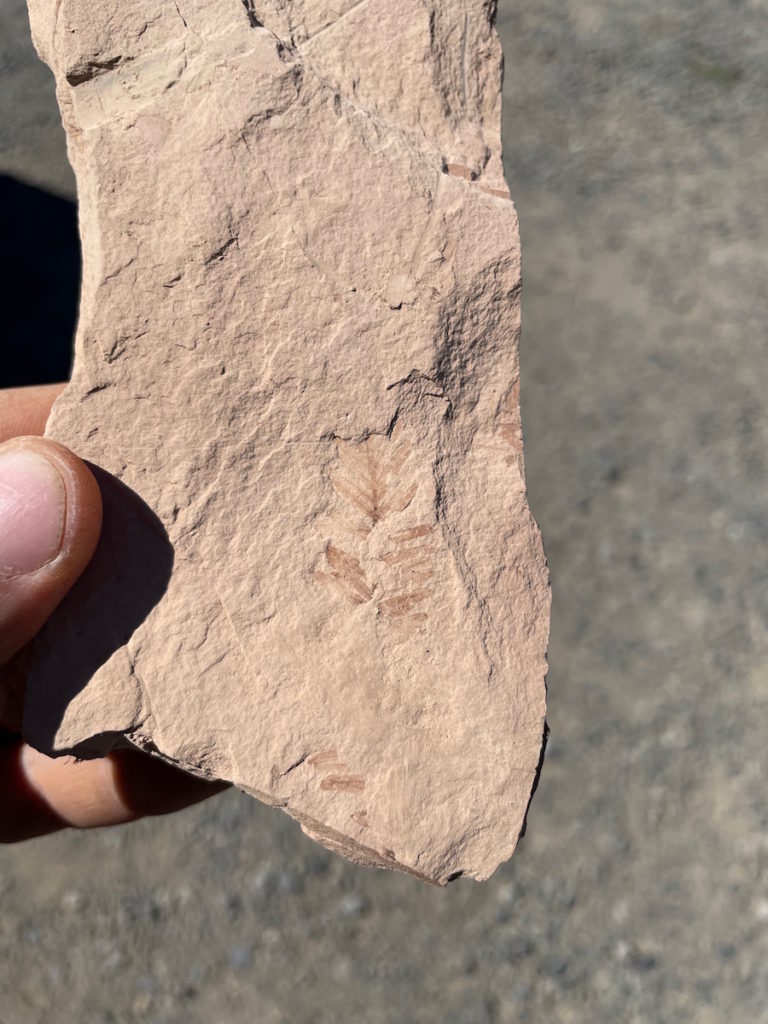Over Labor Day weekend, we watched helplessly as smoke from nearby wildfires enveloped the entire cascade range. This meant that one of our two 7-day cascade wilderness passes we had secured earlier in the year would go unused. Sad face.
After spending some time on Purpleair looking for areas where the smoke wasn’t, we noticed that areas east of us had been spared. This, plus the slightly below roasting forecast, meant it was time to finally venture out to Fossil, Oregon, to take a shot at digging up our own fossils.
What’s the Deal with Fossil, Oregon?
Fossil, Oregon, is a small (population: 473, although it feels even smaller) town located approximately 2 hours northeast of Bend. Located near the John Day Fossil Beds national monument, it seems that the town stumbled onto some of their own fossil luck as well.
Back in 1949, when the new town high school was under construction, they uncovered fossil beds behind the school. These fossil beds are the remnants of a shallow lakebed that covered the area approximately 33 million years ago.
These beds now contain tons (and as you’ll see soon, I really mean tons) of fossils just sitting near the surface. The town has been kind enough to open up the beds to the public so anyone can dig up their own prehistoric fossils!
Getting to Fossil, Oregon
Fossil is a long way from anywhere in Oregon: 2 hours from Bend, 3 hours from Portland, and 4 hours from Eugene. You’ll be in for a drive no matter where you’re coming from.
Driving over from Bend means taking highway 97 up to Madras, followed by another hour+ on some of the windiest and emptiest roads we have driven in the entire state. Seriously, we drove there and back on Sunday over Labor Day weekend and saw maybe 15 – 20 cars each on the hour+ segment between Madras and Fossil.
Along the way, on this route, you’ll pass some interesting sights, including the turnoffs for rockhounding sites at Richardson Ranch and the Polka Dot mine, the town of Antelope (population: 47), the John Day National Monument – Clarno Unit, and the John Day river.
Arriving at the Dig Site
Once you arrive in town, just follow the signs to the high school/dig site. Parking is around the side of the school next to the baseball fields.

If you’re anything like us, you might feel underwhelmed or confused when you first park the car. I’m not totally sure what we expected, but I guess it was for the dig site to be a touch bigger than it actually is.
As you look out across the baseball field, you’ll see a hill with some small sections dug out. Certainly not as much as I would have expected to have taken place over the past 50 years, though!
To the side of the field, there is a sign pointing to the trail heading around the side of the field. The school asks that those there to dig fossils stay off of the fields. There is also a donation box located near the trailhead. The requested donation for the upkeep of the area and to help fund the local school programs is $5 per person or $15 for a family of 4.
Not a bad deal at all for a day of fun and knowing we’ll be taking some fossils home with us at the end of the day.
Where to Dig for Fossils
Once you take the trail around the baseball field, you’ll see that it either heads uphill towards a small shelter with a table, or you can continue along the fence. We initially headed uphill but found that the digging was too much for our small tools.

Your best chance to find fossils is to dig down into the layers of rock, which can then be split apart, revealing the fossils inside. Up on top of the hill, it was mostly topsoil and broken-up rocks. I’m sure we could have dug down to the rock if we had brought a larger shovel, but alas…
So after a few minutes, we headed down to the base of the hill, where we saw that large sections of the fossil-containing rock had already been exposed. All we had to do was dig out small sections, break them off with our sophisticated fossil digging tools (i.e., screwdrivers, garden shovels, and a hammer), and split them to reveal the fossils.

Digging in this area started paying off immediately. We were in the fossils!
Digging for Fossils in Fossil, Oregon

Like we said above, once you find the layers of fossil-containing rock, there isn’t much to it! I would head up to the rock and break off pieces. The larger you can keep these pieces of rock, the better the chance you’ll have of uncovering complete fossils.

Once I brought the rocks down to the shade, we would once again use our sophisticated rock-splitting tools (a screwdriver and hammer) to split the rocks open.
When doing this step, look for fractures between the rock layers and try to pry the layers apart like you’re opening a book. Each page of the book would represent a different layer in the rock that can contain fossils.
Some of the folks were there with thin knives that were working really well to separate the rock layers. Our screwdriver method led to a lot of not-so-clean breaks and incomplete fossils.

Luckily this area has so many fossils that even with our rudimentary tools and lack of knowledge, we still managed to uncover dozens of fossils!
Most of them were leaves from ancient cousins of our modern alders, sequoias, maples, and ash. But we did luck out and uncovered two insects and even a fossilized seed (shown above). Here is a great guide for identifying the most common fossils found here.

What Tools are Best for Digging Fossils?
We were lucky to be at the dig site when some other far more experienced fossil hunters were also there. They were super helpful in pointing out the best places to dig and even giving the kids some really nice pieces of rock that they had uncovered.
They also had far nicer fossil digging tools than we did so that they could extract some really nice fossils.
If we were to go out to the Fossil, Oregon fossil beds again, we would bring a rock pick, chisel, and a couple of sacrificial knives. The beds here are unique in that the layers of rock are so easily separated, so you don’t need anything all that expensive when it comes to fossil digging tools.
The rock, once exposed, can be quite fragile, so some protective packing for the fossils is also a good idea so they make it home in one piece.
What Else is there to do in Fossil, Oregon
To be frank, Fossil is a small, remote town out in the middle of nowhere. With that said, there are a few fun places to visit after you’re done digging fossils.
Oregon Paleo Lands Center & Gallery
The Oregon Paleo Lands Center serves as a jumping-off point for activities within the John Day Fossil Beds area. Located in Fossil, Oregon, this is a great spot to stop before or after hitting up the dig site as you can get insight into the geology and history of the area, what fossils you can find at the dig site, and examples of larger fossils found in the region.
The Paleo Lands Center is open seasonally, so check their website or call ahead if you want to make a stop there.
Fossil Museum
The museum in Fossil, aptly named the Fossil Museum, offers a glimpse into the history of the town and area.
The museum, like the Paleo Center, is typically open from Memorial Day to Labor Day, so plan accordingly if you’ll be visiting the area outside these months.
Places to Eat in Fossil
During our visit to Fossil, we packed lunch, not knowing what exactly would be available during the Labor Day holiday. The only place open when we visited was the Fossil Merchantile Company, but a few restaurants are normally open as well.
- The Royal Stag
- Fossil Merchantile Company
- Brenda’s Blessings
The Merchantile company serves as the grocery/convenience/miscellaneous other stuff for sale store in town. They have a selection of fresh produce, drinks, and other goods. The front of the store also has a small selection of microwavable meals with a microwave to use.
Places to Stay Around Fossil
There are a number of campgrounds in Fossil and the surrounding areas.
Directly in town, you can camp at the Fairgrounds, which has RV sites with full hookups, dry sites, and tent-only sites.
Two parks nearby, Shelton Wayside and Bear Hollow park, offer both RV and tent sites. These parks don’t have any hookups for RVs, so plan accordingly. Both of these sites are located SE of Fossil, approximately 7 and 13 miles, respectively.
The town of fossil also has a motel, The Fossil Motel and RV Park, and a B&B, the Hyatt House B&B, as options.
